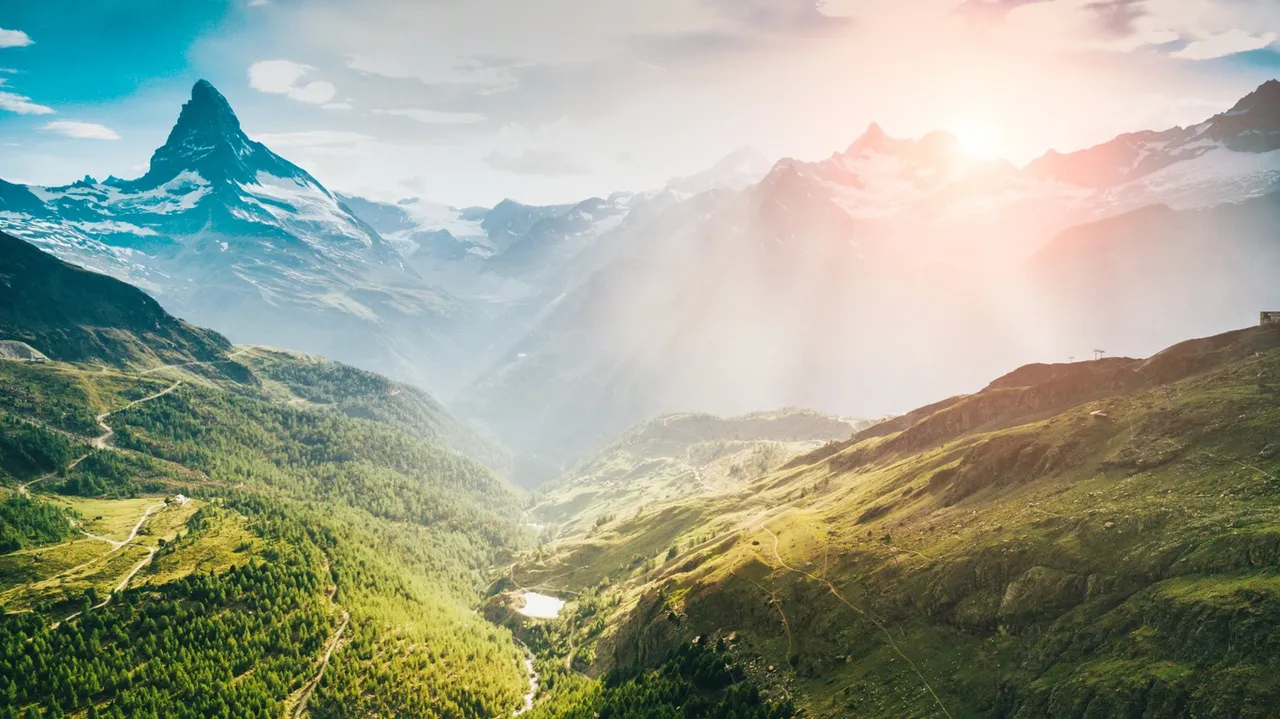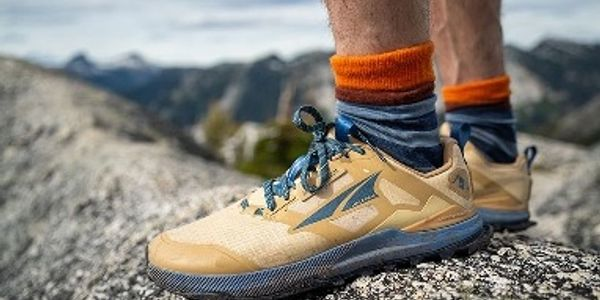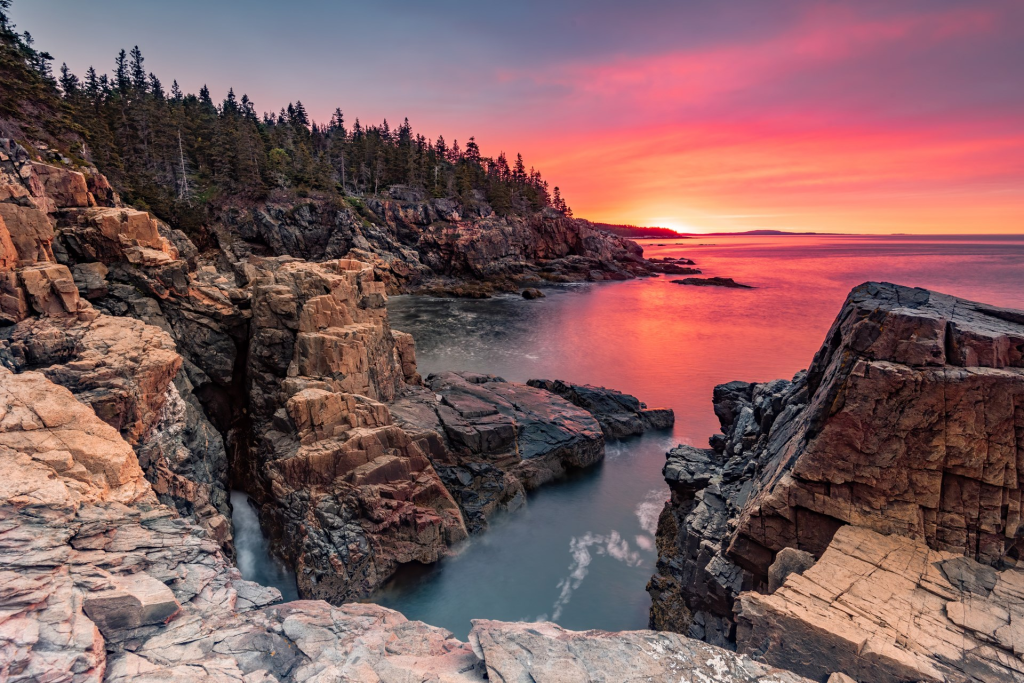Exploring the Top National Parks in the Eastern United States
By Cap Puckhaber, Reno, Nevada
I’m Cap Puckhaber. I’m a marketing professional, amateur investor, part-time blogger, and outdoor enthusiast. Today we break down our top 5 recommendations for hiking and backpacking on the East Coast.
When it comes to hiking in the United States, most people think of the West. They picture its stunning mountain ranges and vast landscapes. However, the Eastern U.S. offers an equally captivating array of trails. These mountains and national parks are often overlooked but deserve more recognition. The East has its own hidden gems for adventurers. It offers a quieter, more intimate experience with nature, from lush forests to rugged peaks. The East Coast has plenty to offer seasoned hikers and novices alike. Here’s why hiking in the Eastern U.S. should be on your radar.
Top 5 National Parks in the Eastern U.S.
When most people dream of a national park, their minds drift west. They picture the towering peaks of the Rockies or the dramatic desert canyons. But let me tell you, overlooking the eastern half of the country is a huge mistake. The East Coast and Midwest are home to some of the most beautiful parks. These parks are biologically diverse and accessible in the entire system. You don’t have to fly across the country. You can find ancient mountains, dramatic coastlines, and deep forests right here. I’ve gathered a list of five absolute gems. They are perfect for hikers, explorers, and anyone looking to reconnect with nature.
Great Smoky Mountains National Park (Tennessee & North Carolina)
First up is the undisputed heavyweight: Great Smoky Mountains National Park. It consistently holds the title of the most visited national park in the U.S. Its beauty is undeniable. It’s defined by iconic, mist-covered peaks and a staggering diversity of life.
Finding the Smokies The park sprawls across the Tennessee and North Carolina border. It’s incredibly accessible. The main gateways are the bustling town of Gatlinburg, TN, and the culturally rich Cherokee, NC. Most visitors fly into Knoxville’s McGhee Tyson Airport (TYS). This is only a 1.5-hour drive away, making it an easy weekend destination.
What to See and Do This place is paradise for hikers. It offers over 850 miles of trails. These range from gentle walks to strenuous, multi-day backpacking trips. The two “must-do” drives are the Cades Cove Loop and Newfound Gap Road. Cades Cove is an 11-mile road, famous for 19th-century cabins and great wildlife viewing. (You’ll often see black bears!). Newfound Gap Road climbs to the park’s highest elevations.
Know Before You Go: Permits & Fees Here’s a key thing to know. The park has no entrance fee. However, you must purchase and display a parking tag. This applies to any vehicle parked for more than 15 minutes. This is a crucial detail to plan for.
When to Go The fall foliage season is world-famous and stunning. It is also incredibly crowded. If you’d prefer a quieter visit, I highly recommend the spring. You can see the spectacular bloom of over 1,500 types of wildflowers.
Shenandoah National Park (Virginia)
Shenandoah National Park is just a short, two-hour drive from the nation’s capital. It feels like a complete escape, offering 200,000 acres of rolling hills.
The Escape from D.C. The park’s defining feature is the 105-mile Skyline Drive. This scenic byway runs the park’s entire length along the Blue Ridge Mountains. You can enter the drive from four main points. The most popular are the northern Front Royal entrance near I-66. The other is the southern Rockfish Gap entrance near I-64.
Hiking and Driving the Blue Ridge This drive alone is worth the trip. It has 75 overlooks with breathtaking vistas of the Shenandoah Valley. For hikers, the park has over 500 miles of trails. This includes a 101-mile segment of the legendary Appalachian Trail. Are you up for a serious challenge? The park is home to the famous Old Rag Mountain. This strenuous 9-mile scramble is one of the most rewarding hikes in the mid-Atlantic. If that’s not your speed, try the 1.4-mile trail to Dark Hollow Falls. It’s a short, steep, but beautiful walk to a cascading waterfall.
Know Before You Go: Permits & Fees The $30 vehicle entrance fee is good for seven days. Be aware, you must book a day-use permit in advance. This is required to hike Old Rag Mountain from March through November.
When to Go The best time to visit is undoubtedly October. The vibrant fall foliage is at its peak. Spring is a wonderful, less-crowded alternative.
Acadia National Park (Maine)
From Virginia’s mountains, let’s head north. We’re going to the dramatic, rugged coast of Maine and Acadia National Park. This park is a stunning blend. It features a rocky coastline, dense forest, and granite-domed mountains. It’s all packed onto Mount Desert Island.
Where the Mountains Meet the Sea The charming town of Bar Harbor is the main gateway. You can get there by flying into Hancock County-Bar Harbor Airport. Or, fly into the larger Bangor International Airport (BGR), about 75 minutes away. The park’s 27-mile Park Loop Road is the main artery. It connects you to highlights like Sand Beach and Thunder Hole. You’ll also see the stunning views from Otter Cliff.
Your Acadia Adventure List The absolute pinnacle of the park is Cadillac Mountain. It’s the highest peak on the U.S. East Coast. It’s also the first place to see the sunrise in the U.S. during certain times of year. Hiking in Acadia is incredibly diverse. You can take an easy stroll on the coastal Ocean Path. You can bike the 45 miles of historic, car-free Carriage Roads. For a real thrill, tackle the famous iron rung trails. The Precipice Trail, for example, is a near-vertical climb up a cliff face.
Know Before You Go: Permits & Fees You must get a vehicle reservation to see the sunrise from Cadillac Mountain. Book this online in advance to drive the summit road between May and October.
When to Go My personal recommendation is to visit in early fall. September is great. The summer crowds have thinned, the weather is crisp, and fall colors are emerging.
Cuyahoga Valley National Park (Ohio)
Cuyahoga Valley National Park is a true hidden gem. It’s a peaceful refuge of forests and wetlands. It is tucked between the urban centers of Cleveland and Akron, Ohio.
The Urban Oasis This proximity makes it one of the most accessible national parks. You can fly into Cleveland (CLE) or Akron-Canton (CAK). You can be in the park in under 30 minutes. What makes this park so special is its rich history and mellow vibe.
A Refuge of Waterfalls and Trails The 125 miles of trails are perfect for relaxed hiking. The Ledges Trail is a standout. It winds through impressive moss-covered sandstone cliffs. The park’s main recreation artery is the 20-mile, flat Ohio & Erie Canal Towpath Trail. It’s perfect for walking or biking. One unique feature is the Cuyahoga Valley Scenic Railroad. You can ride it for a tour or use it as a shuttle. Bike the trail one way and ride the train back. Be sure to visit the 65-foot Brandywine Falls. It’s the park’s most iconic waterfall. It is best viewed after a heavy rain.
Know Before You Go: Permits & Fees Perhaps the most relaxing part is the lack of an entrance fee. There is absolutely no fee to visit the park.
When to Go For the best experience, go in the spring. The waterfalls are at their most powerful then. Or, go in the fall for beautiful, crowd-free foliage.
Congaree National Park (South Carolina)
Finally, you must visit Congaree National Park in South Carolina. It’s an experience that feels like stepping back in time. This park protects the largest remaining tract of old-growth bottomland hardwood forest. This results in a “swamp” ecosystem that feels prehistoric.
A Forest of Giants Located just 30 minutes southeast of Columbia, it’s an easy day trip. The park is home to towering “champion trees.” These are some of the tallest on the East Coast. The best way to see them is on the 2.4-mile Boardwalk Loop Trail.
Exploring the Swamp This elevated walkway takes you through the heart of the cypress and tupelo forest. It keeps your feet dry while you’re surrounded by the unique ecosystem. For a more adventurous exploration, see the park by water. You can rent a kayak or canoe. Then, paddle the 15-mile marked Cedar Creek Canoe Trail. For about two weeks in late spring, the park hosts a rare synchronous firefly display.
Know Before You Go: Permits & Fees The park is free to enter. However, a coveted online lottery system manages access to the firefly event. You must enter this lottery weeks in advance.
When to Go This is a swamp, so I strongly advise against visiting in summer. It is incredibly hot, humid, and buggy. Instead, plan your trip for the pleasant spring or fall months. You’ll have a truly magical hike among giants.
Top 10 Best Places to Backpack Overnight in the Eastern U.S.
1. The Appalachian Trail (Multiple States)
The Appalachian Trail, or “A.T.,” is a cornerstone of American backpacking. This 2,200-mile trail spans from Georgia to Maine. It’s a bucket-list destination for “thru-hikers” attempting the entire journey. “Section-hikers” tackle it one piece at a time.
- Location and Access: The trail crosses 14 states, so access is plentiful. You can reach it from hundreds of road crossings. For multi-day trips, park in a trail town like Harpers Ferry, WV, or Hanover, NH. Then, arrange a shuttle to your starting trailhead. Major parks like the Great Smokies and Shenandoah also have A.T. sections.
- What to Expect: The trail’s character changes dramatically. In the south, you’ll climb high, grassy “balds” in North Carolina and Tennessee. These offer stunning 360-degree views. The mid-Atlantic sections become a “green tunnel” of dense forests. North in New Hampshire and Maine, the trail transforms. It becomes a rugged, technical, and exposed alpine climb. A network of “lean-tos” (three-sided shelters) provides convenient overnight stays.
- Permits and Best Time: For most of its 2,200 miles, the A.T. is simple. Backpacking requires no fees or permits. However, there are critical exceptions. In Great Smoky Mountains National Park, you need a permit and advance reservations ($8/person/night). Shenandoah National Park also requires a backcountry permit. You must get it online in advance and pay a reservation and per-person fee. At the northern terminus in Baxter State Park, Maine, you need a free A.T. Hiker Permit to summit Katahdin. The best seasons are spring (April-May) and autumn (September-October).
2. Linville Gorge Wilderness (North Carolina)
People call Linville Gorge the “Grand Canyon of the East.” It is a true, rugged wilderness area, not a place for beginners. It offers one of the most rewarding challenges in the Southeast.
- Location and Access: The Linville River carved this 12-mile-long gorge. It is in the Pisgah National Forest, about 60 miles northeast of Asheville. Reaching the trailheads is part of the adventure. You must travel on unpaved Forest Service roads. We highly recommend a high-clearance vehicle.
- What to Expect: The gorge offers a primitive experience. It plummets 2,000 feet from the rim to the river. The 39 miles of trails are steep, rocky, and often unblazed. You’ll be navigating by map and scrambling over boulders. You’ll also make river crossings that can be dangerous in high water. The reward is unparalleled views from spots like Table Rock.
- Permits and Best Time: This is a federally protected Wilderness area. Therefore, you need free backcountry permits for overnight camping on weekends (Fri/Sat). This applies from May 1st through October 31st. The park issues only 50 permits per night. You must reserve yours online in advance. Weekday camping does not require a permit. The best time to go is autumn, especially October.
3. The Presidential Traverse (New Hampshire)
The “Presidential Traverse” is one of the premier alpine treks in the country. It is a challenging, point-to-point journey. It crosses the highest and most exposed peaks in the White Mountains.
- Location and Access: This 23-mile route is in the White Mountain National Forest. It typically runs from the Appalachia Trailhead to the Crawford Path Trailhead. You must arrange a shuttle for this point-to-point hike.
- What to Expect: This trek spends most of its time above the treeline. You will be on an exposed, rocky ridge. You’ll summit up to eight 4,000-foot peaks, including Mount Washington. This peak is infamous for its severe weather. The hike involves about 9,000 feet of elevation gain and offers massive views.
- Permits and Best Time: You do not need a traditional “permit.” You have three options for sleeping. You can book a bunk in an expensive AMC hut (reserve months ahead). You can stay at a designated backcountry campsite (small nightly fee). Or, you can disperse camp for free. If you disperse camp, you must follow strict rules. Camp 200 feet from trails and water. You cannot camp above the treeline. The hiking season is very short: July through September.
4. Black Mountain Crest Trail (North Carolina)
This trail is one of the toughest and most rewarding hikes in the East. It runs along the crest of the Black Mountains. It’s a strenuous, rugged, and spectacular route for experienced backpackers.
- Location and Access: The trail is an 11.5-mile point-to-point hike. It’s in the Pisgah National Forest, northeast of Asheville. A shuttle is necessary. Most hikers park at the end (Mount Mitchell State Park). They get a shuttle to the northern terminus at Bowlens Creek.
- What to Expect: The trail is relentlessly steep. It starts with a 3,000-foot climb in the first few miles. It then traverses a half-dozen peaks over 6,000 feet. It culminates at the 6,684-foot summit of Mount Mitchell. The trail is rocky and often requires using fixed ropes. The payoff is near-constant, expansive views.
- Permits and Best Time: The logistics are simple. You need no backcountry permit for dispersed camping in the Pisgah section. There are several good primitive campsites. However, we highly recommend bear canisters. The best time to go is late spring (May) or early fall (September-October).
5. Shenandoah National Park (Virginia)
Shenandoah National Park is a classic and accessible destination for backpacking. The 105-mile Skyline Drive runs along the crest. This makes it easy to plan loop hikes.
- Location and Access: The park is a long, narrow strip of mountains in Virginia. It’s easy to get to. The northern entrance at Front Royal is only 70 miles from Washington, D.C.
- What to Expect: The park has over 500 miles of trails. This includes 101 miles of the Appalachian Trail. A popular strategy is to hike the A.T. on the ridge. Then, drop down into one of the “hollows” on a side trail. You’ll find waterfalls and solitude there.
- Permits and Best Time: This is a critical update. You need a backcountry permit for all overnight stays. The park eliminated the old, free paper permit system. You must now get your permit online in advance through Recreation.gov. There is a $6 reservation fee plus a $9 per-person fee. The best seasons are spring (April-May) for wildflowers and autumn (October) for fall foliage.
6. Pisgah National Forest (North Carolina)
The Art Loeb Trail is the signature backpacking trip in this part of Pisgah. It’s a 30.1-mile trail. It showcases the best of the Southern Appalachians, from deep forests to high, grassy balds.
- Location and Access: This point-to-point trail is near Brevard and Asheville. A shuttle is required. The northern terminus is at Daniel Boone Boy Scout Camp. The southern terminus is at Davidson River Campground. Many people hike the most famous section by starting at the Black Balsam Knob parking area.
- What to Expect: This trail is beloved for its diversity. Its main attraction is the high-elevation section. It crosses a series of 6,000-foot “balds.” These are treeless, grassy mountains like Black Balsam Knob. They offer 360-degree views.
- Permits and Best Time: You need no fees for backcountry camping. However, there are two critical regulations. You must use bear canisters for overnight camping in the Shining Rock Wilderness and Black Balsam areas. Campfires are prohibited within the Shining Rock Wilderness. You must carry a stove.
7. Great Smoky Mountains (Tennessee/North Carolina)
The Great Smoky Mountains are America’s most-visited national park. For backpackers, it’s easy to find solitude on its vast trail network.
- Location and Access: The park straddles the Tennessee and North Carolina border. Gatlinburg, TN, and Cherokee, NC, are the main gateway towns. The park has over 800 miles of trails. This includes a 71-mile, high-elevation section of the Appalachian Trail.
- What to Expect: The park features misty, old-growth forests and beautiful mountain views. The Alum Cave Trail is a classic strenuous route. It leads to the high country and the LeConte Shelter.
- Permits and Best Time: Planning is essential here. You need backcountry permits for all overnight stays. You cannot camp anywhere. You must stay at a designated, pre-reserved campsite or shelter. You must go online to map your itinerary and reserve your specific sites. The fee is $8 per person, per night. Reservations open 30 days in advance. Popular sites fill up immediately. You also now need a Parking Tag ($5/day) to park anywhere.
8. Roan Mountain (Tennessee/North Carolina)
Roan Mountain is not a single peak. It’s a highland range that the Appalachian Trail crosses. It’s famous for its sweeping grassy balds and incredible rhododendron blooms.
- Location and Access: The primary access point is the large parking area at Carver’s Gap. It’s located right on the state line. The A.T. crosses directly through the parking lot. This makes it an ideal place to start an overnight trip.
- What to Expect: Hiking north from Carver’s Gap, you immediately climb onto open balds. These include Round Bald and Jane Bald. The 360-degree views are continuous. The area also contains the world’s largest natural garden of catawba rhododendrons.
- Permits and Best Time: Logistics are wonderfully simple. The Cherokee and Pisgah National Forests manage this land. You need no backcountry permits or fees for dispersed camping. You just need to follow standard rules. The absolute best time to go is mid-to-late June. The massive rhododendron gardens are in peak bloom then.
9. The Adirondacks (New York)
The Adirondacks are a 6-million-acre park in upstate New York. It offers a rugged landscape of rocky peaks, deep forests, and thousands of lakes.
- Location and Access: The High Peaks Wilderness near Lake Placid is the most popular destination. Backpackers come here to climb some of the 46 peaks over 4,000 feet. The primary entry point is the Adirondak Loj trailhead.
- What to Expect: A classic multi-day plan is to hike in and set up a base camp. You could camp at a spot like Marcy Dam or Lake Colden. Then, spend a few days summiting the surrounding peaks.
- Permits and Best Time: You need no permits for groups under 10. However, the regulations are extremely strict. You must use bear canisters for all overnight camping in the Eastern High Peaks. This rule applies from April 1st to November 30th. Campfires are prohibited in this same area. You must carry a stove. The best hiking season is July through September. Spring is “mud season.” Late May/June is “black fly season.” You should avoid both.
10. The Dolly Sods Wilderness (West Virginia)
Dolly Sods is one of the most unique landscapes in the East. It’s a high-altitude plateau in the Monongahela National Forest. Its climate and plant life feel more like northern Canada.
- Location and Access: Access is via gravel Forest Service roads, which can be rough. Popular trailheads are at Bear Rocks Preserve (north) or Red Creek Campground (south).
- What to Expect: The 47 miles of trails are famously rocky. They are also often very wet and muddy. Waterproof boots are essential. The landscape is the main draw. You get stunning vistas from rocky outcroppings like Bear Rocks, especially at sunrise.
- Permits and Best Time: This is a true wilderness area. As such, you need no backcountry permits or fees. You can disperse camp anywhere if you follow Leave No Trace principles. The only major rule is that group size cannot exceed 10 people. The best times to go are late summer (August-September) for wild blueberries. Early fall (late Sept-early Oct) is also great for the incredible foliage.
Best Times to Go Hiking and Backpacking in the East
The best time to visit the Eastern U.S. depends on the region. It also depends on what experience you’re seeking. Spring (April-June) and Fall (September-November) are generally the best times. Temperatures are mild. The foliage in areas like the Smokies and Shenandoah can be breathtaking.
Summer (July-August) is great for higher elevation trails. This is especially true in the Smokies or the Adirondacks, where temperatures stay cooler. However, this is also peak tourist season, so expect more crowds. Winter (December-February) can offer solitude. But be prepared for snowy conditions and colder temperatures.
Final Tips for Hiking in the Eastern U.S.
- Prepare for Variable Weather: The Eastern U.S. can experience dramatic weather shifts. This is especially true in mountains. Be sure to check forecasts before your trip.
- Bring the Right Gear: The East may not have the extreme conditions of the Rockies. Still, it’s essential to bring proper gear. This is vital for multi-day hikes.
- Don’t Rush: The Eastern U.S. is full of hidden gems. You can’t experience them in just a day or two. Take your time, explore different trails, and appreciate the quiet beauty.
Hiking and backpacking in the Eastern U.S. offer some of the best outdoor experiences. While the West has grand vistas, the East has its own charm. It has rich biodiversity, diverse ecosystems, and fewer crowds. So pack your gear, lace up your boots, and explore the wild beauty of the East!
About the author: Cap Puckhaber is a marketing strategist, finance writer, and outdoor enthusiast. He writes across CapPuckhaber.com, TheHikingAdventures.com, SimpleFinanceBlog.com, and BlackDiamondMarketingSolutions.com. Follow him for honest, real-world advice backed by 20+ years of experience.
My Picks for Top Places to Hike in Tennessee
Guide to Appalachian Trail Thru-Hikes
5 Hikes in Acadia National Park for Beginners

Join our Mailing List
Sign up with us now and be the first one to know about our exclusive offers and product updates.
By submitting your information, you`re giving us permission to email you. You may unsubscribe at any time.
Follow Cap Puckhaber on Social Media


About the Author: Cap Puckhaber
Backpacker, Marketer, Investor, Blogger, Husband, Dog-Dad, Golfer, Snowboarder
Cap Puckhaber is a marketing strategist, finance writer, and outdoor enthusiast from Reno, Nevada. He writes across CapPuckhaber.com, TheHikingAdventures.com, SimpleFinanceBlog.com, and BlackDiamondMarketingSolutions.com.
Follow him for honest, real-world advice backed by 20+ years of experience.





